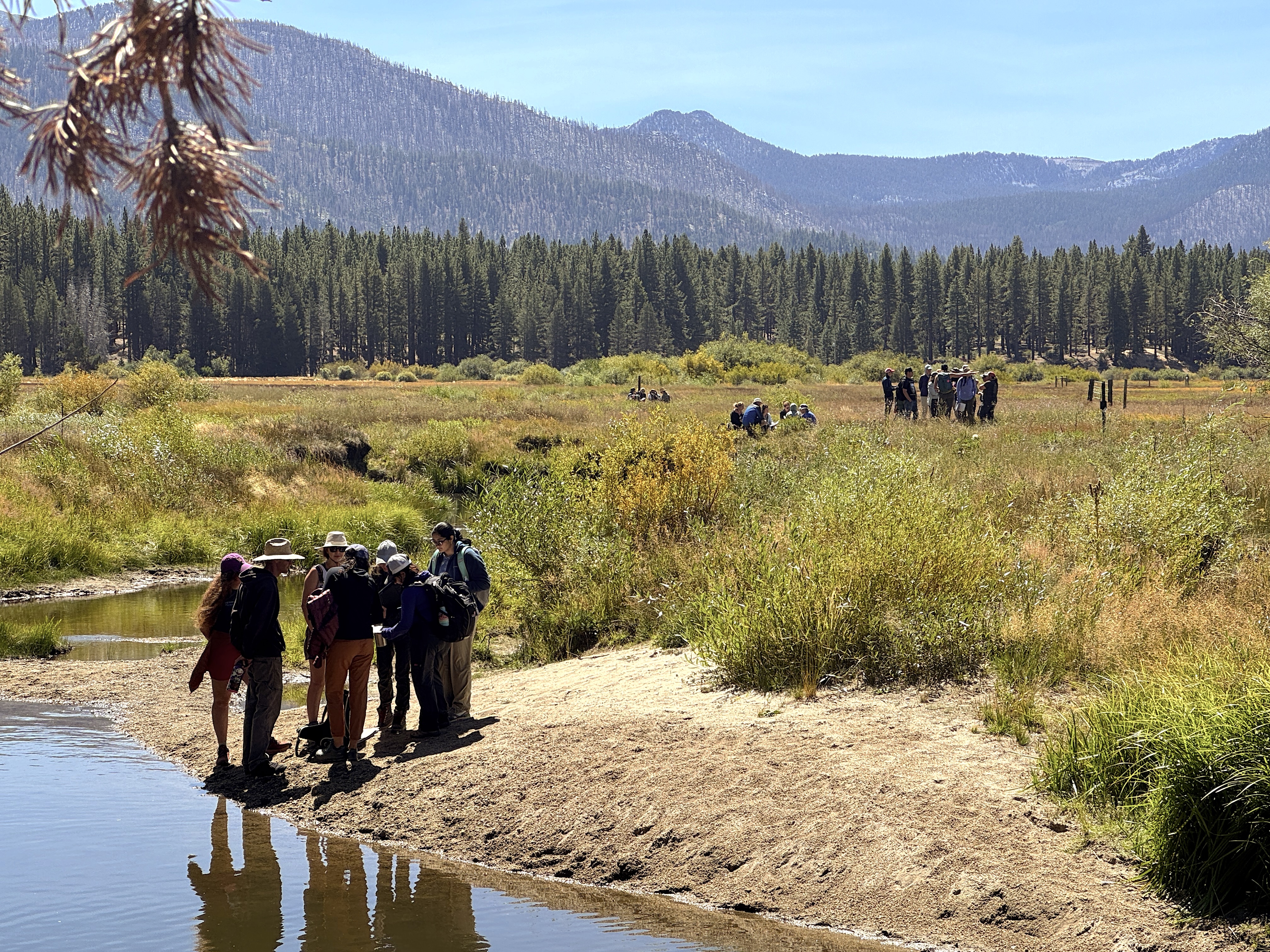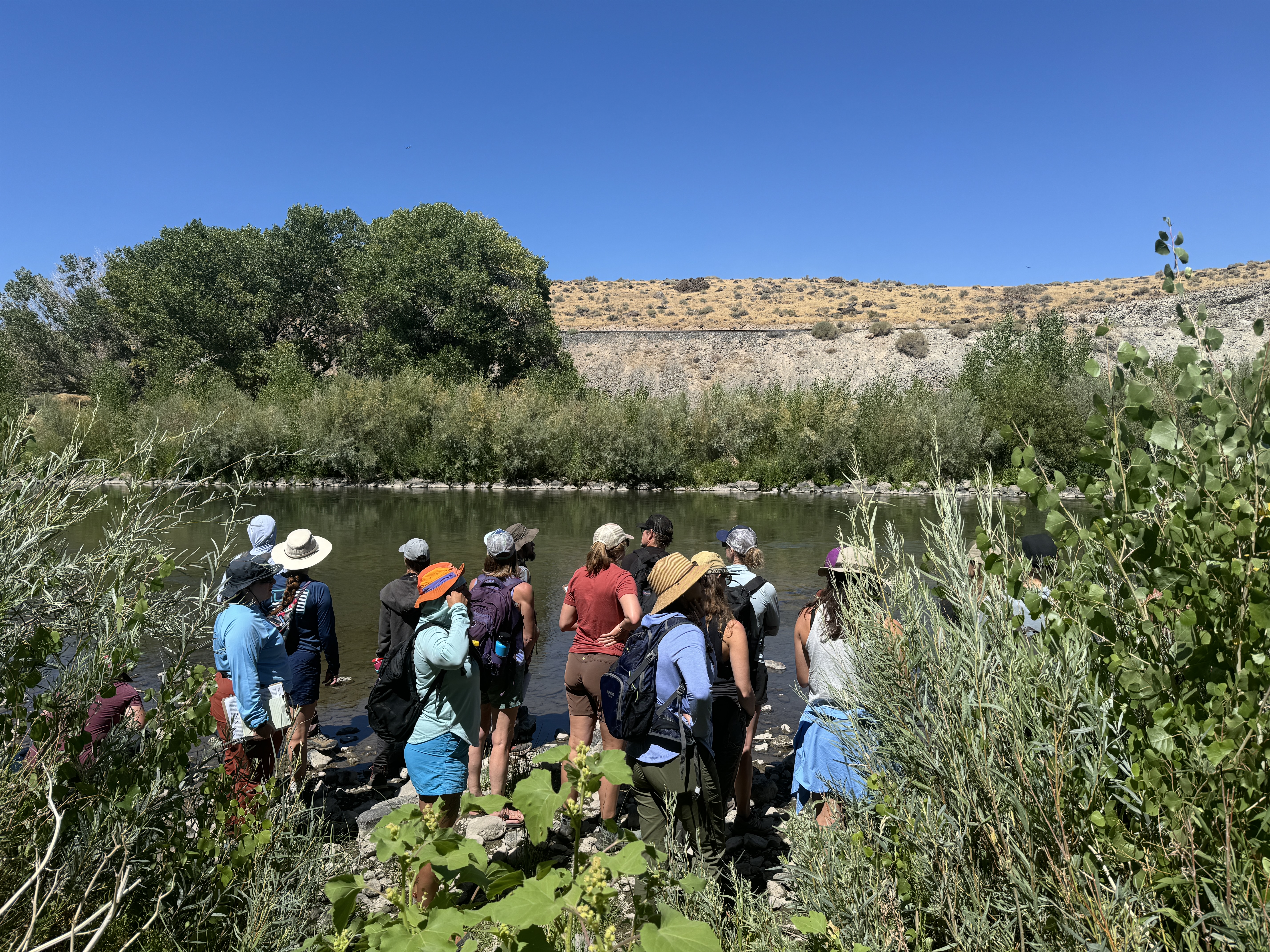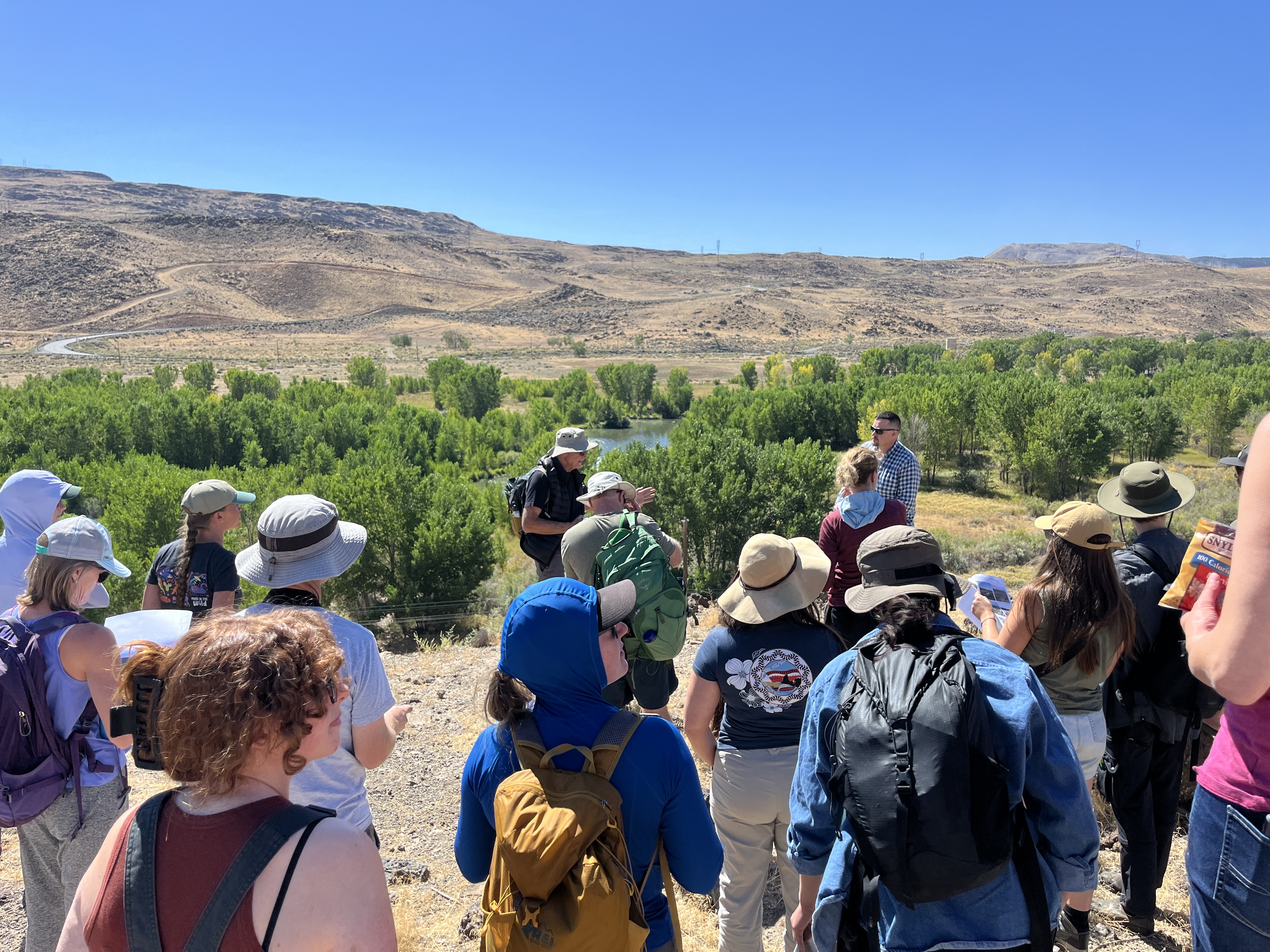This past August, around 40 students and instructors gathered at the Sagehen field station outside Truckee, CA for the Riverlab’s annual Geomorphic and Ecological Fundamentals of River & Stream Restoration Short Course. Throughout the five day course, participants engaged in stimulating discussion, collaborated on problem solving, visited several restoration sites in the Lake Tahoe area, and gained hands-on experience in river restoration methods. Instructors included experts from the field, including Matt Kondolf (UC Berkeley), Peter Wilcock (Utah State), Mike Limm (Cañada College), Scott McBain (Applied River Sciences), Mark Tompkins (FlowWest), Dave Shaw (Balance Hydrologics), among others.
Throughout the week, Sagehenners bonded over good food, shared interests, and the beautiful Tahoe scenery. Excitement from the week included a bear sighting and a guitar sing-along to close out the week. We look forward to another engaging course next summer!







